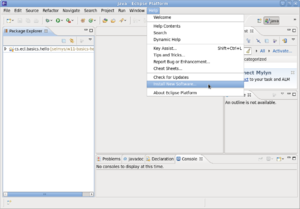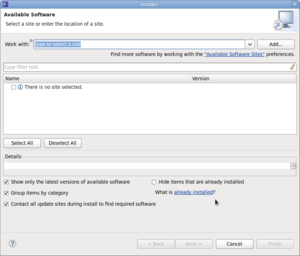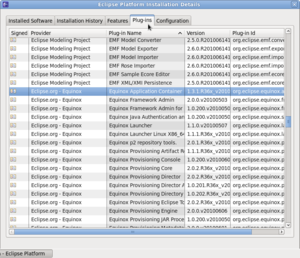OSGi : Install Eclipse Plugins Fedora
Contents
Installing Eclipse onto Fedora 14 - X86_64
- Start with a clean install of Fedora 14, preferably from a live CD. For my examples I used the 64 bit edition.
- When the install is complete, open a terminal window and run yum update to bring your system up to date. You may have to reboot once this is done.
- Install Eclipse (Helios 3.6.1) with the command yum groupinstall "Fedora Eclipse".
- That's it! You can now use Eclipse to build C, C++ or Java programs.
Checking which Plug-ins are Already Installed
Fedora Eclipse comes with many plug-ins preinstalled. To list the installed plug-ins, select Install New Software from the Help menu.
Then, near the bottom of the window, click on What is Already Installed.
Select the Plug-ins tab and scroll down to verify that Eclipse Equinox is installed.
So What is Eclipse Equinox?
Equinox is an implementation of the OSGi R4 core framework specification, a set of bundles that implement various optional OSGi services and other infrastructure for running OSGi-based systems.
Ok, so Equinox is like an engine built into Eclipse that allows programmers to execute their OSGi-based systems without the use of an OSGi-enabled application server.
So What is OSGi?
OSGi (Open Services Gateway Initiative) defines a modular (component) framework for Java.
Ok, so it's just a definition of how to do things better when running Java-based web applications. Better than what? Well, better than JavaEE (Java Enterprise Edition).


